Dominic Steele, Senior Minister at inner-city Annandale, delivered a no-holds-barred speech calling on Anglicans to respond to the fewer people in their churches. In a statistic-laden speech, Steele introduced a frank and detailed report on attendance patterns to the Sydney Anglican Synod (church parliament).
“This is a brutal facts moment for us,” he began. “And yet there’s an opportunity to, in a disciplined way, face the facts and then pray that in the end, under God, we can and will prevail.”
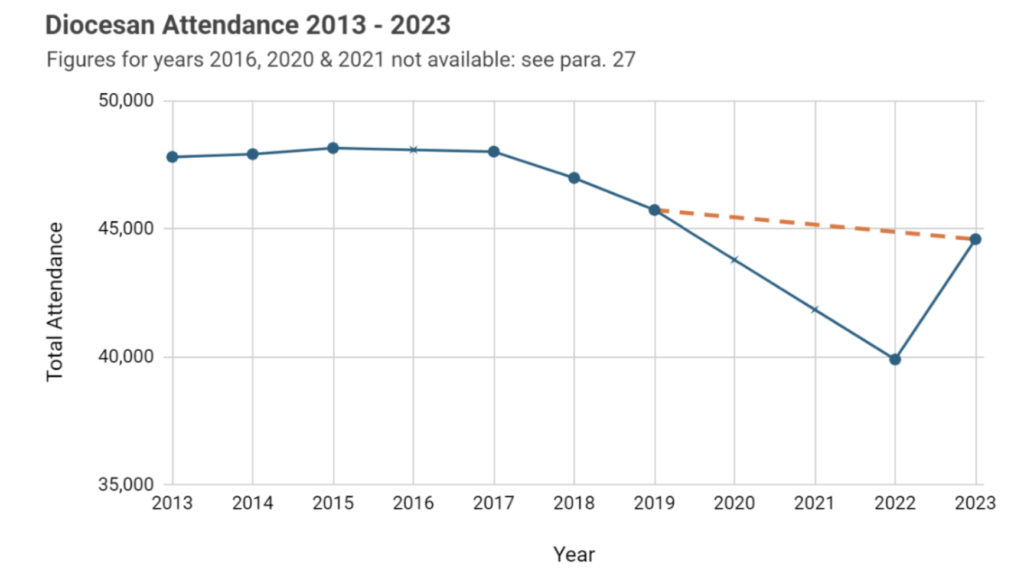
Steele began with this graph, which shows a steady attendance until 2017, then a decline which is projected through the Covid years of 2020 and 2021 and a bounce back in 2023. Steele noted: “Sydney Anglican adult attendance declined 6.7% between 2013 and 2023, or 14 percent against population.”
Then he caught the attention of the Synod – mostly made up of local ministers and lay representatives – with this ominous diagram.
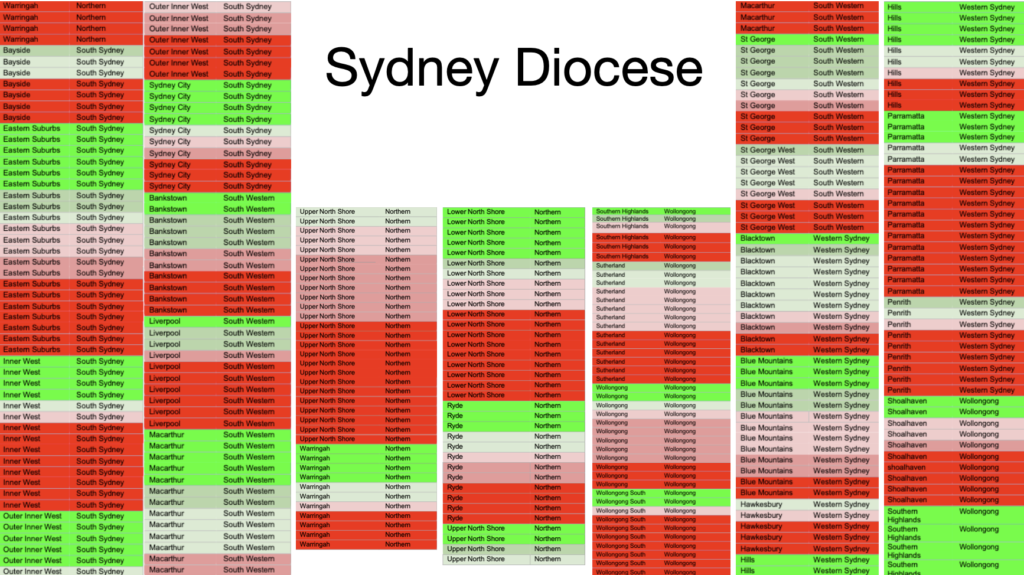
“That’s every church centre in the diocese – listed by Mission Area. This table is taken from Appendix B of the report – de-identified.
“Dark red represents a drop, in that church, in attendance of more than 20% (over ten years). Light red represents a drop in that church in attendance of between 10 and 20%. Pink represents a drop in that church of attendance of between 0 and 10%. Light green represents a rise in attendance of between 0-10%. Mid Green represents a rise in attendance of between 10 and 20% And Bright green represents a rise in attendance of more than 20%.”
“That’s a confronting amount of red,” said Steele. “Every red/light red/pink rectangle represents a senior minister, a staff team, a parish council, a parish – where – people have worked, prayed, sacrificed and struggled – and attendance has declined.
“We were delighted to celebrate the growth of a Green Square [representing the Western Sydney suburb of] Sadlier on Monday night. But there are many more red rectangles than green rectangles.”
The outer parts of Sydney – where new churches have been planted and the Inner City, perhaps used to communities with a growing scepticism about Christianity, have done better. This was one of the big shocks in the report. The Northern Region and Wollongong, which includes Sutherland, are the traditional heartland region for the Anglicans.
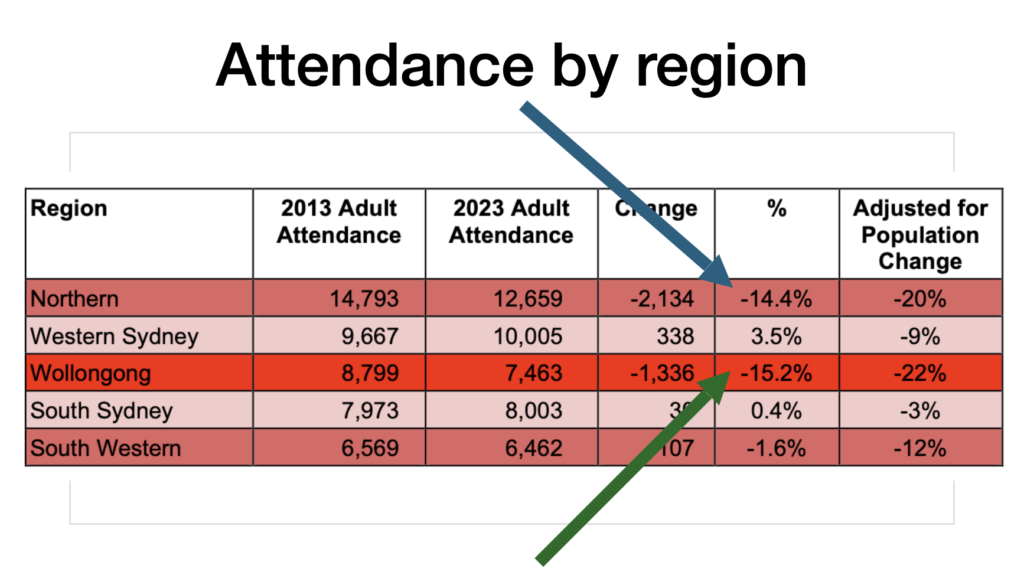
Steele dug into the report to explain the reasons for the geography of the church’s decline and growth.
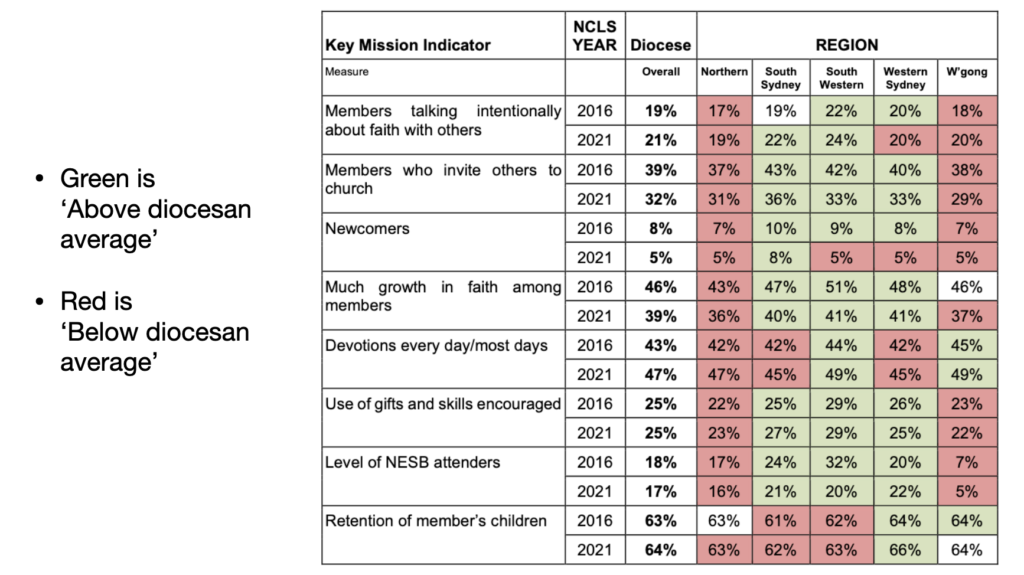
Steele acknowledged that the “red” regions in the north and Wollongong had seen the wave of secularisation hit all churches in the area – that the soil had changed. However, Anglicans had to face internal issues as well.
“There are internal congregational factors, local leadership and denominational factors at play.
“This is the regional breakdown of the internal health statistics for our churches – measures of ‘mission heat’ and ‘maturity’ as measured by the National Church Life Survey (NCLS) in 2016 and 2021.
“The middle three green columns – show that in 2016 and 2021, the church health characteristics for South Sydney, South Western Sydney and Western Sydney were above the diocesan average.
“The two edge bars show that the churches of the Northern and Wollongong Regions came in lower than the diocesan average. There are clear areas for reflection.
“How is our church going on
● Percentage of newcomers.
● Mission Heat questions: Members talking intentionally about their faith? Inviting others to church?”
And then came a graph Steele found truly disappointing. It underlines a weakness that even churches that are numerically growing share.
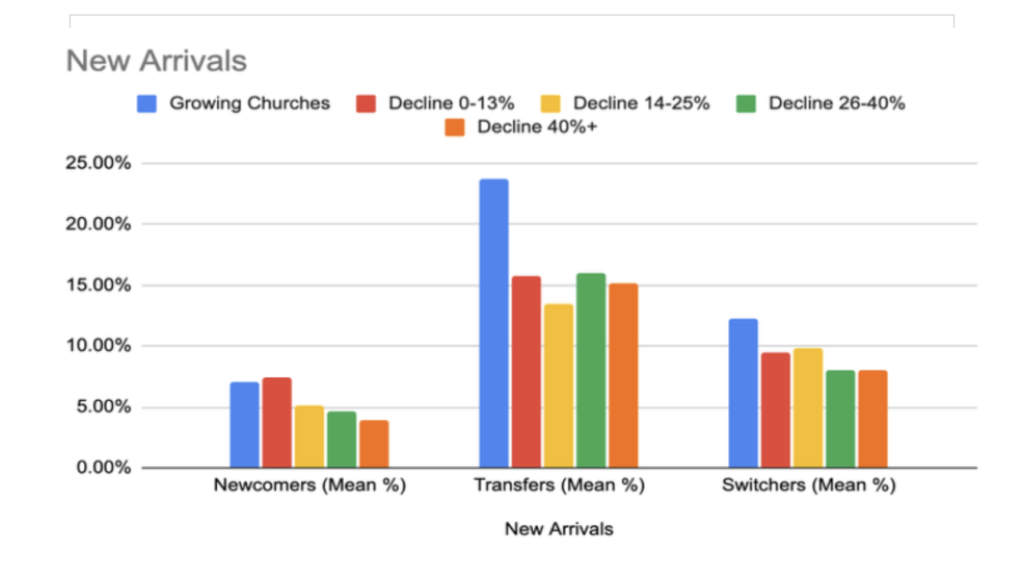
The blue bars reveal a startling fact – switchers (from other denominations and transfers make up most of “growth.”
“I SO SO SO wanted it to be that the churches that were doing best in evangelism were the growing churches,” said Steele.
“I really wanted this left graph to have a really high blue column.
“But the data shows that our churches that are growing the most are mostly growing from people transferring from other Anglican churches.
“Or people switching … from another denomination.
“The hard reality is that our overall adult attendance decline is because we collectively are seeing fewer adults saved.”
Steele points to a decline in newcomers as one key reason the blue columns are in the wrong place.
“12.4 per cent of our membership were new in 2001. Down to 5.4 per cent in 2021.”
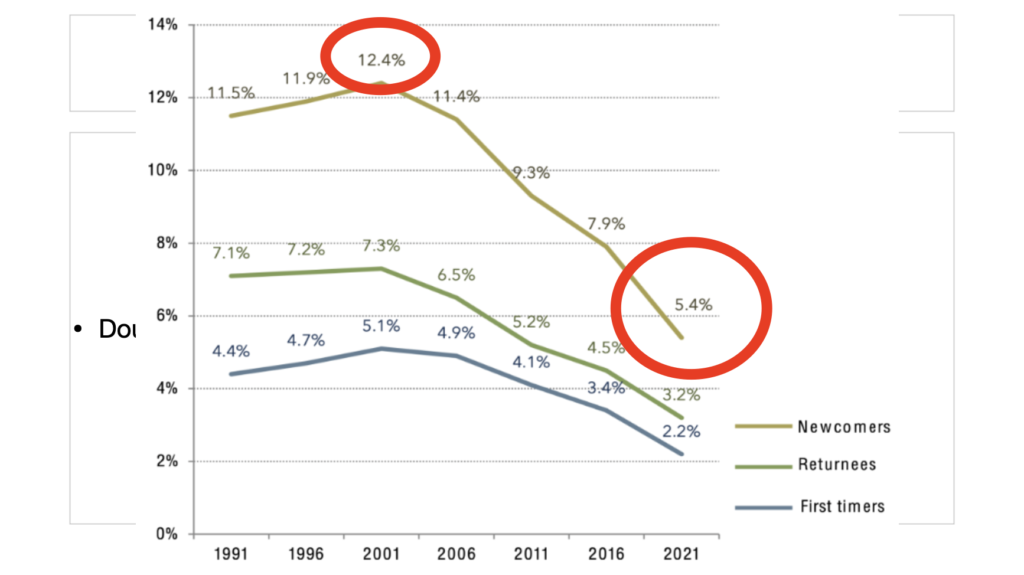
“The key ways to see a collective rise in the number of adults in our churches.
- To see an increase in the number of kids coming to faith, and growing up to become Christian adults.
- To see an increase in the number of adults professing faith in Christ.
‘We want the crowds to see Jesus. That’s what we long for. That they might trust him and honour him for his glory.
“The truth is – It hasn’t been happening as effectively as any of us would want. I have made mistakes as a leader. I could have done better as a leader. I’ve sinned. And I have made dumb decisions. People have left our church because of pastoral fails on my part. I weep over the mistakes that I have made.”
“We are in the growing category. But I am going to get a consultation next year… because I want us to be better.”
This tone of repentance was taken up in the discussion, particularly by Robin Kinstead, the minister of Figtree Anglican Church. He moved an amendment to strengthen the motion that Steele was speaking to – adding the words that the Synod “gives thanks to God for the recent ‘partial post-Covid recovery and calls for confession and humble repentance where we have fallen short in giving sufficient priority, attention, reflection and resources to seeing the lost of Sydney Diocese and the Illawarra saved by Jesus.” The amendment passed overwhelmingly.
Main Image: Sydney Synod 2024 (during a property presentation.)

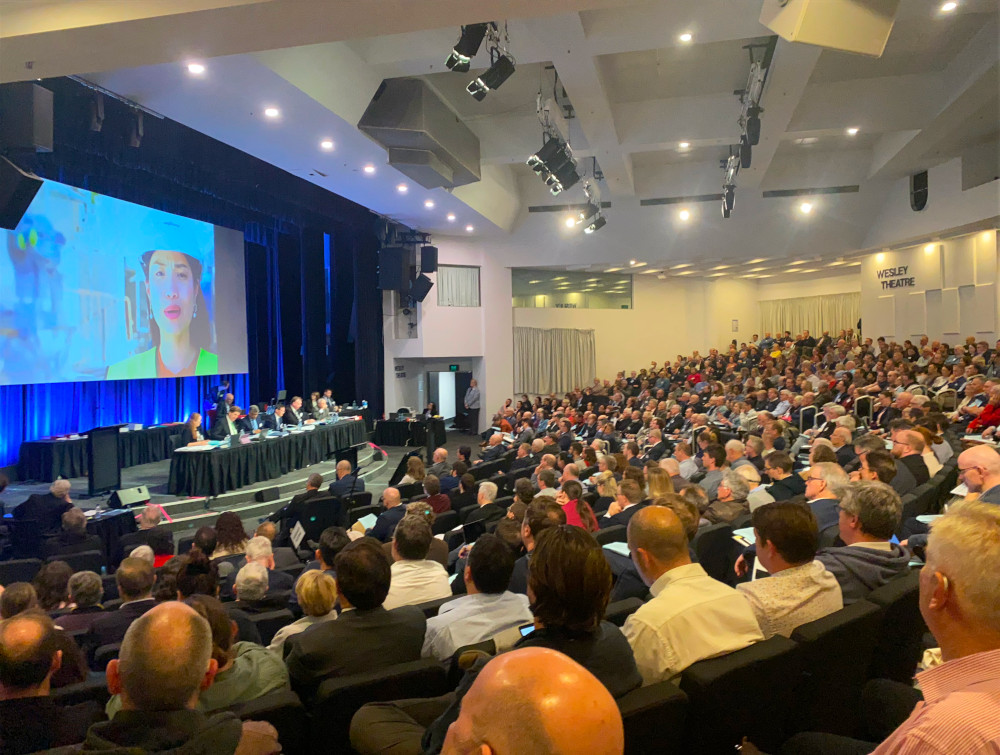
“…calls for confession and humble repentance where we have fallen short in giving sufficient priority, attention, reflection and resources to seeing the lost of Sydney Diocese and the Illawarra saved by Jesus.” Sydney diocese already focus enormously on evangelism. Wasn’t 10% of Sydney the archbishop’s goal 15 or so years ago? I’m sure they have put plenty of resources and prayers into that goal. This is unlikely to be where they are falling short, if indeed thay are falling short.
Thank you for an honest report on attendance in your diocese. In Melbourne we’re not doing so well either, although that’s my observation as my work takes me to different parishes.